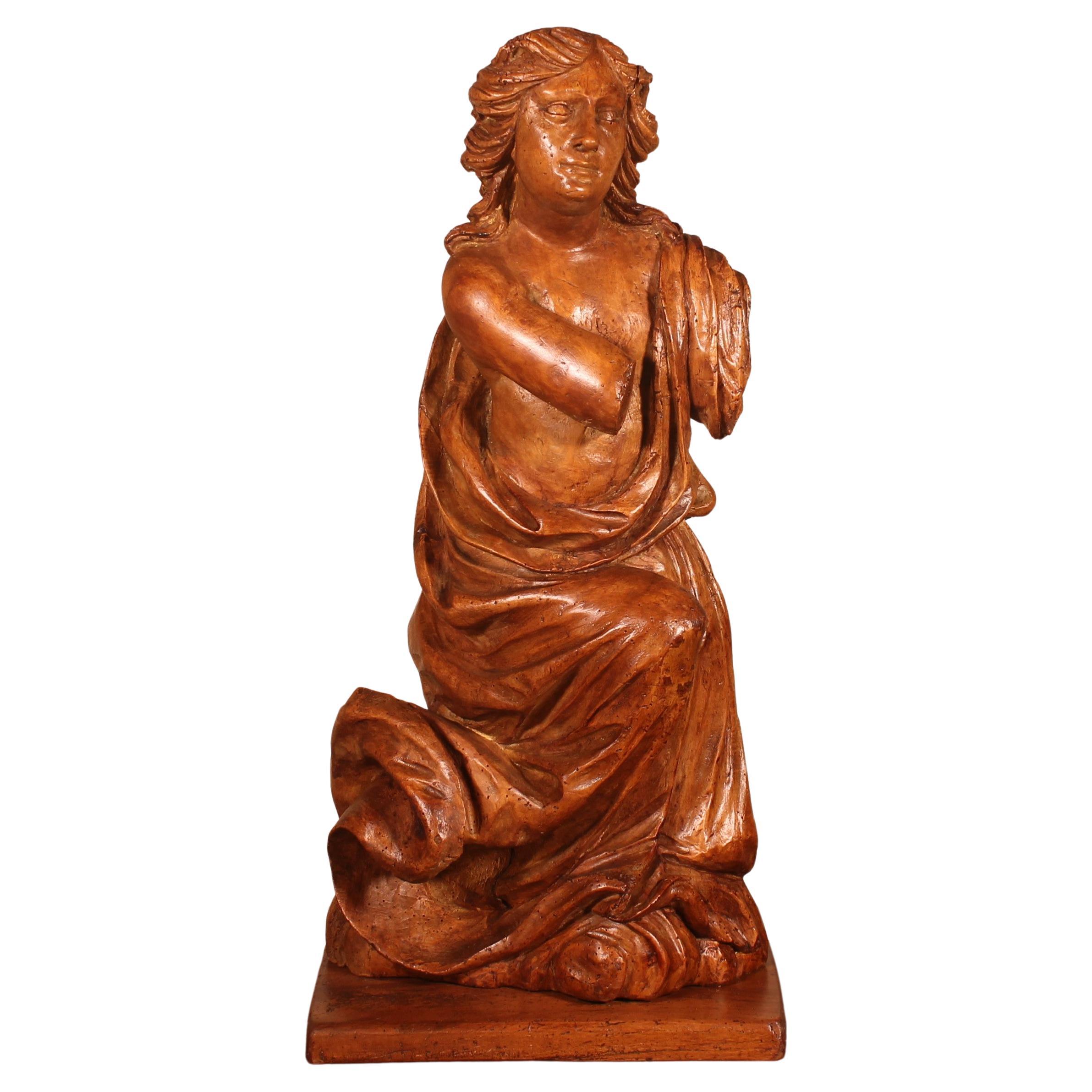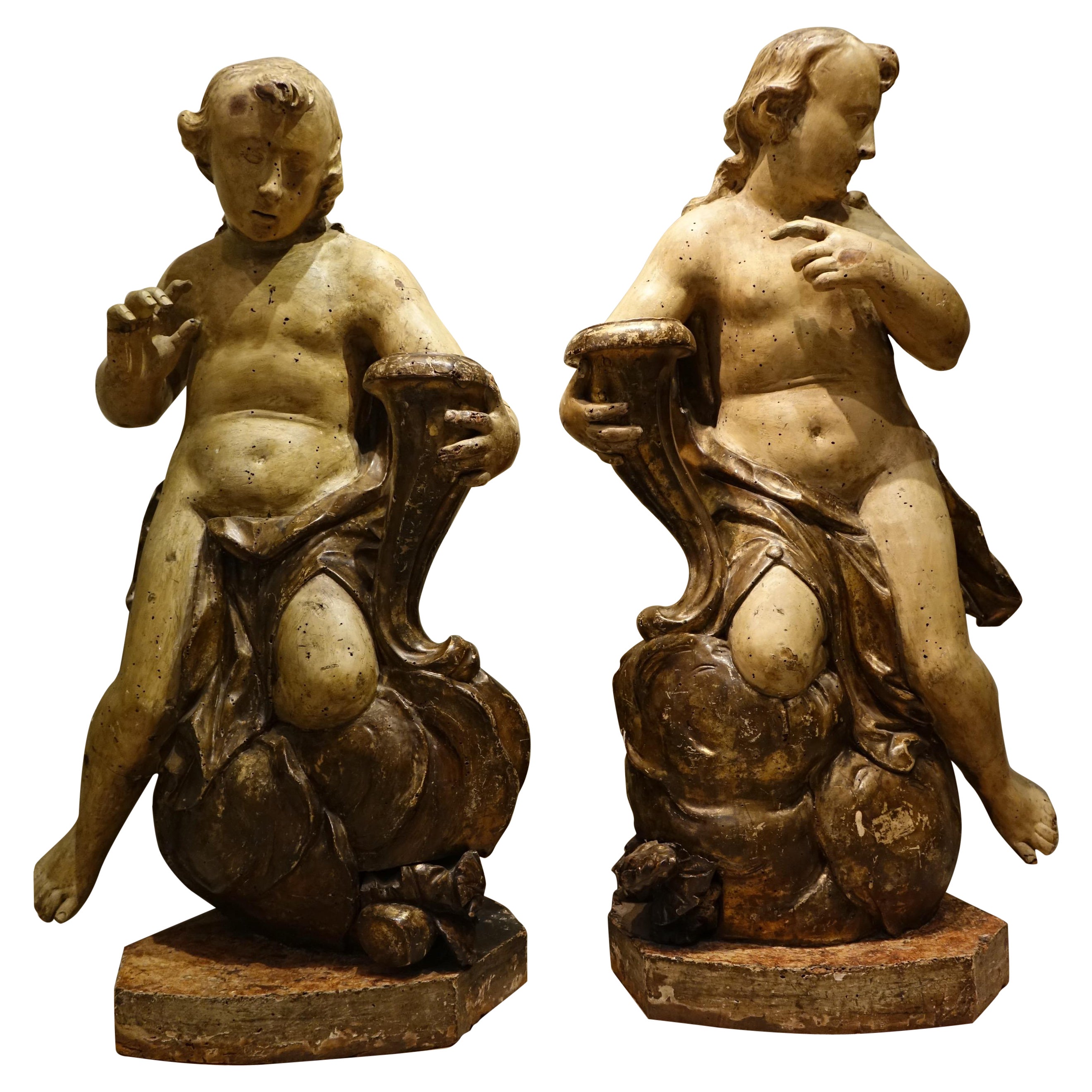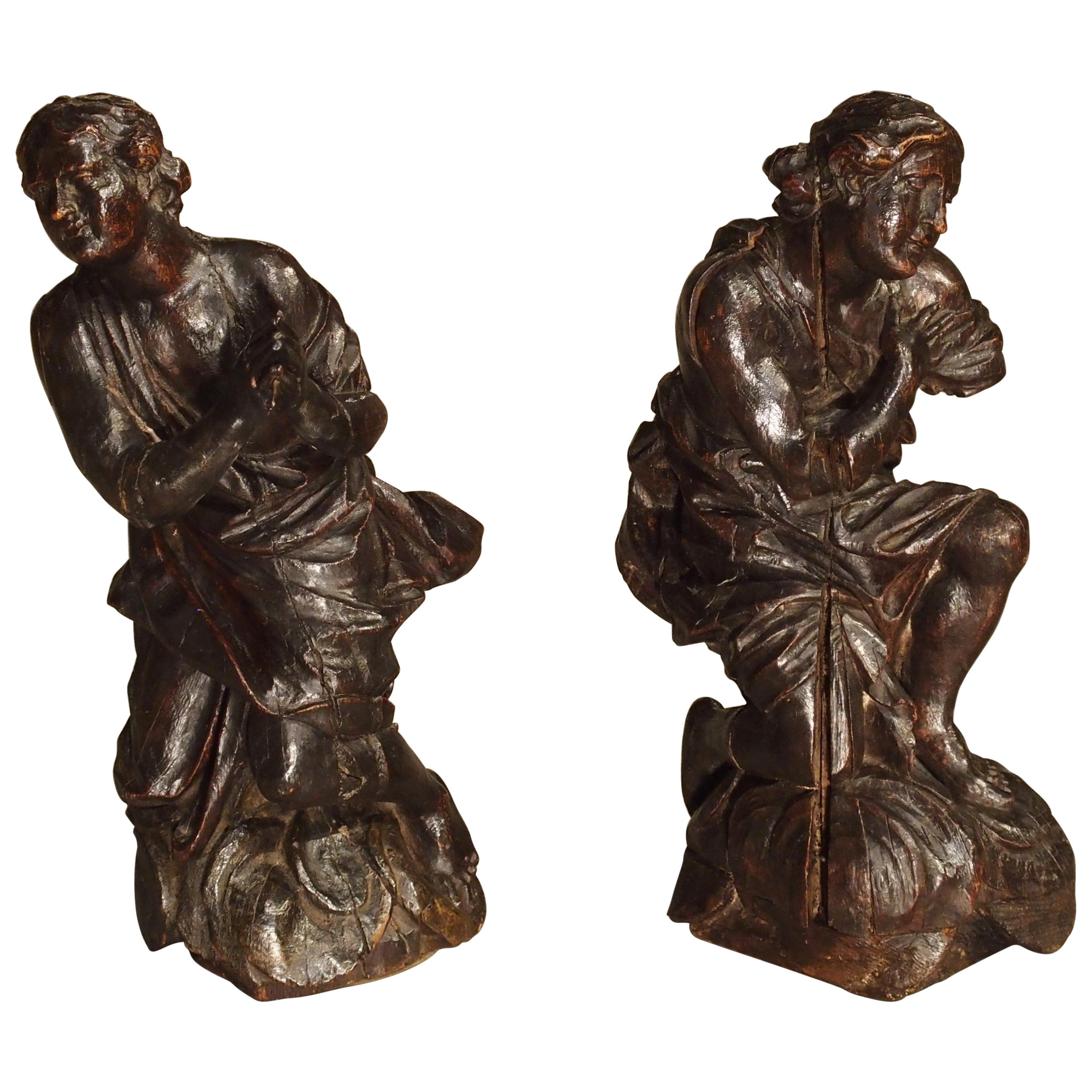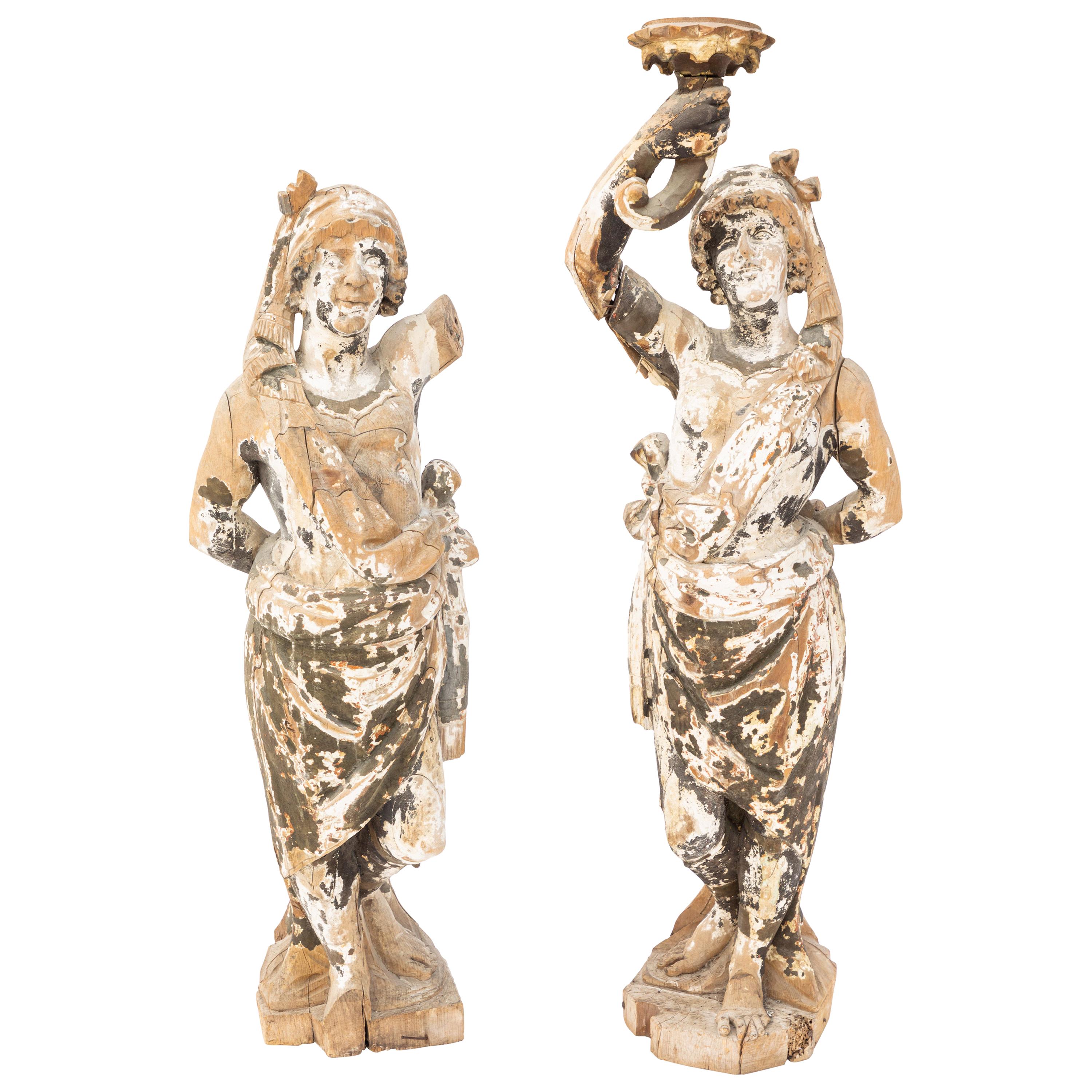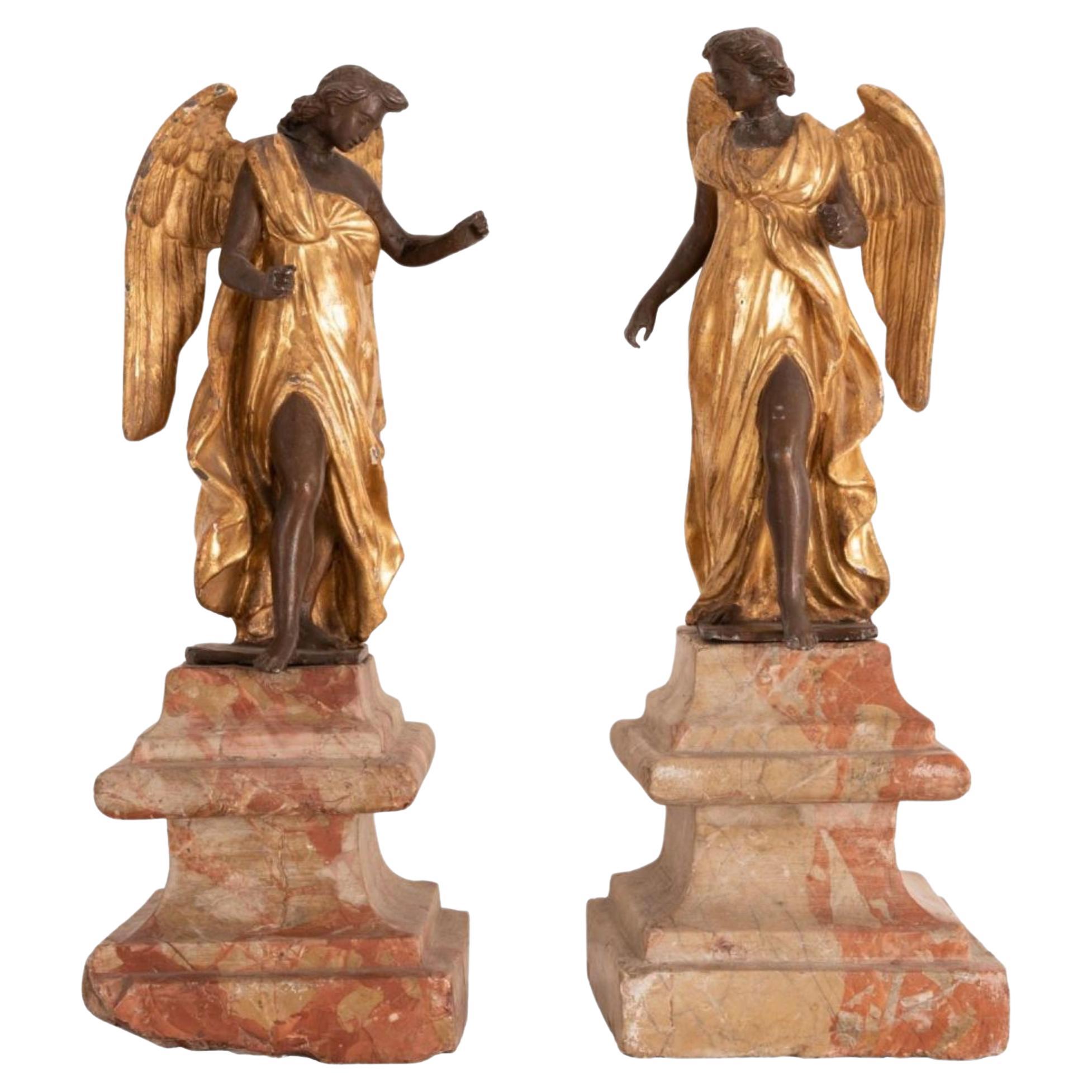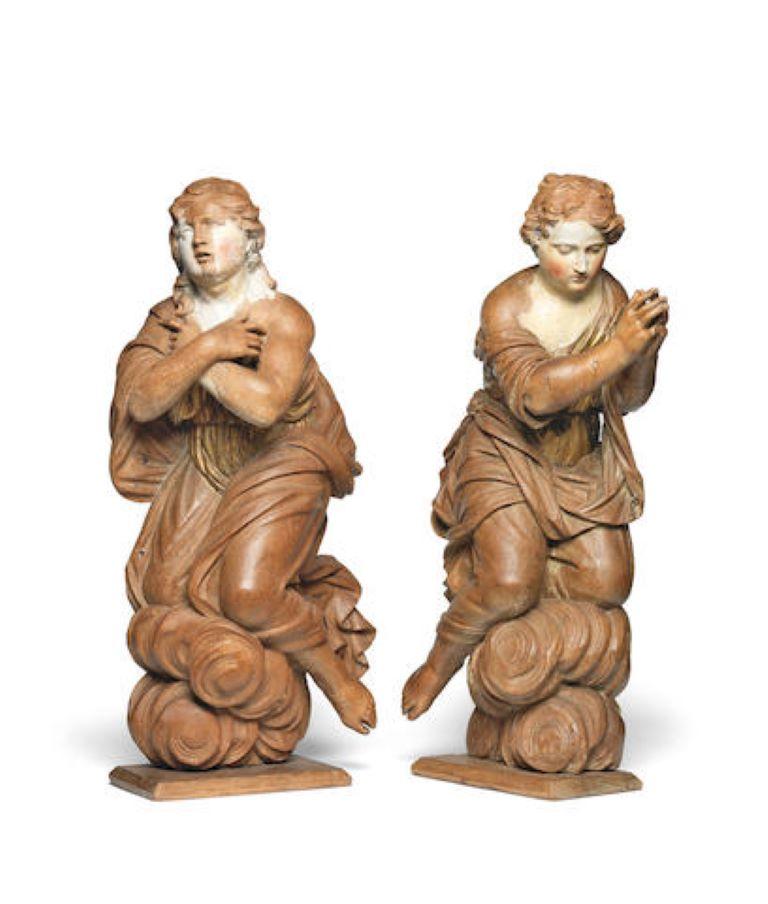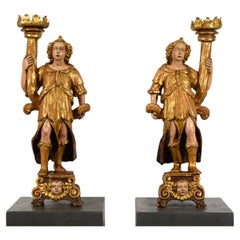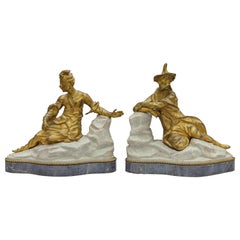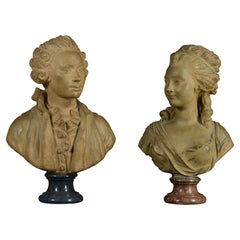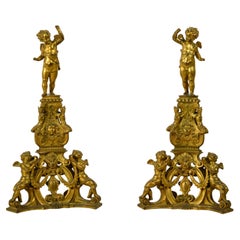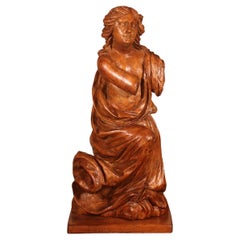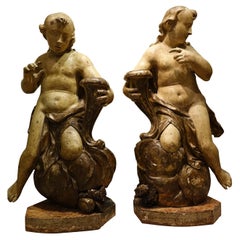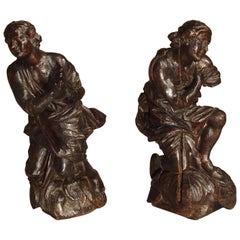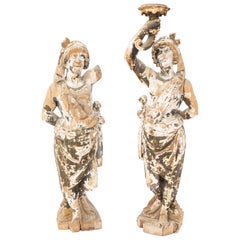Items Similar to 17th century, Pair of Italian Baroque Walnut Sculptures
Want more images or videos?
Request additional images or videos from the seller
1 of 21
17th century, Pair of Italian Baroque Walnut Sculptures
$21,937.04
£16,301
€18,500
CA$30,362.16
A$33,810.68
CHF 17,653.33
MX$409,679.06
NOK 222,627.12
SEK 210,066.24
DKK 140,862.34
About the Item
17th century, Pair of Italian Baroque Walnut Sculptures
Measures: H 104 X W 60 X D 30 cm
The pair of sculptures was made in the Venetian area in Italy towards the end of the 17th century, in walnut wood, and depict two angels.
The two figures, which are presented in natural wood, have an asexual physiognomy, characteristic of angels, spiritual beings, creatures of God able to appear under human guise. The long wavy hair rests on the bare shoulders. They are wrapped in a soft robe that rests on the arms and body creating moving draperies. Vaguely mirrored, they hold with their arms raised a drape that falls lightly, like air swelling, on the other arm. The figures, which turn their gaze towards the hand placed down, have the weight shifted on one leg, while the other knee is slightly bent: a dynamic posture and slightly genuflected, but graceful and elegant, which reminds a dance and gives movement to the two heavenly creatures.
With a great decorative effect and good carving quality, they can be displayed in different environments, resulting very scenographic position slightly raised, above the bases, or above consoles and drawers. They can be placed in pairs or individually, even in the center of spaces, as the three-dimensionality and dynamics of the figures makes them usable also from secondary to frontal points of view.
The sculptures rest on wooden bases, taken up with a golden painting. Over time the wings were removed.
Some minor missing parts are reported.
- Dimensions:Height: 40.95 in (104 cm)Width: 23.63 in (60 cm)Depth: 11.82 in (30 cm)
- Style:Baroque (Of the Period)
- Materials and Techniques:
- Place of Origin:
- Period:Late 17th Century
- Date of Manufacture:Late 17th Century
- Condition:Wear consistent with age and use. Minor losses.
- Seller Location:IT
- Reference Number:1stDibs: LU4405241892032
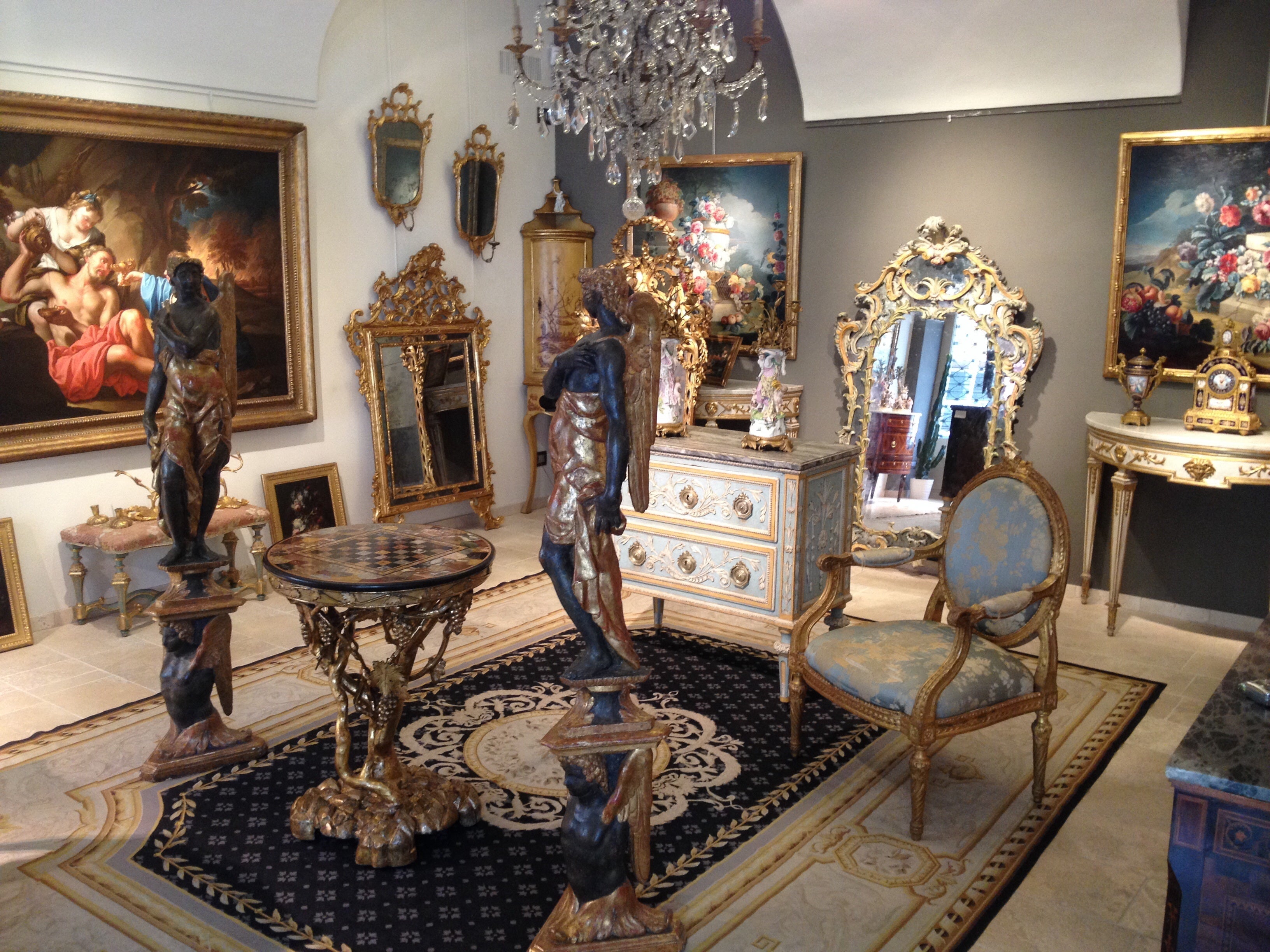
About the Seller
5.0
Platinum Seller
Premium sellers with a 4.7+ rating and 24-hour response times
Established in 1980
1stDibs seller since 2019
56 sales on 1stDibs
Typical response time: 1 hour
- ShippingRetrieving quote...Shipping from: Italy
- Return Policy
Authenticity Guarantee
In the unlikely event there’s an issue with an item’s authenticity, contact us within 1 year for a full refund. DetailsMoney-Back Guarantee
If your item is not as described, is damaged in transit, or does not arrive, contact us within 7 days for a full refund. Details24-Hour Cancellation
You have a 24-hour grace period in which to reconsider your purchase, with no questions asked.Vetted Professional Sellers
Our world-class sellers must adhere to strict standards for service and quality, maintaining the integrity of our listings.Price-Match Guarantee
If you find that a seller listed the same item for a lower price elsewhere, we’ll match it.Trusted Global Delivery
Our best-in-class carrier network provides specialized shipping options worldwide, including custom delivery.More From This Seller
View All16th Century, Pair of Italian Lacquered and Gilt Wood Sculptures Torch Holders
Located in IT
16th Century, Pair of Italian Lacquered and Gilt Wood Sculptures Torch Holders
The pair of sculptures, in finely carved wood, lacquered and gilded, was born as a torch holder, and ...
Category
Antique 16th Century Italian Renaissance Figurative Sculptures
Materials
Wood
18th Century Pair of French Gilt Bronze Sculptures on Marble Base
Located in IT
18th century pair of french gilt bronze sculptures on marble base representing Chinese figures
This particular and lovely pair of sculp...
Category
Antique Mid-18th Century French Louis XV Figurative Sculptures
Materials
Marble, Bronze
19th Century, Pair of Terracotta French Busts
By Augustin Pajou
Located in IT
Pair of terracotta French busts resting on circular marble bases, 19th century, signed on the back.
The refined pair of busts depicts a man and a woman who have been paired accord...
Category
Antique 19th Century French Louis XV Busts
Materials
Terracotta
XIX Century, Pair of Venetian Gilt Bronze Fireplace Chenets in Baroque Style
Located in IT
XIX Century, Pair of Venetian gilt bronze fireplace Chenets in Baroque Style
This imposing pair of Fireplace Chenets in finely chiselled and gi...
Category
Antique Early 19th Century Italian Baroque Fireplace Tools and Chimney Pots
Materials
Bronze
18th Century, Italian Bronze Sculpture with Venus Removing Her Sandal
Located in IT
18th Century, Italian Bronze Sculpture with Venus Removing Her Sandal
This bronze sculpture represents Venus as she takes off her sandal. Made in the neoclassical era in Italy, it consists of the bronze sculpture of the Greek goddess Aphrodite, Venus for the Romans. The naked goddess, getting ready for the bath, makes the very human gesture of loosing a sandal.
The left arm is raised, as if to compensate the position while maintaining the balance. Next to her, wrapped around a rocky spur, is a dolphin, an animal iconographically linked to the goddess because of his birth from the foam of the sea. The figure rests on a cylindrical and concave bronze base, with finely chiselled reserves. The bronze element is in turn resting on a africano marble cylinder with black of Belgium marble base.
Venus is one of the major Roman goddesses primarily associated with eros and beauty. It is traditionally understood as the equivalent of the Greek goddess Aphrodite, goddess of beauty, physical and passionate love, among the major deities of Olympus. His birth is due to a dramatic event: Uranus, Heaven, is mutilated by his son Cronus, who punishes him for the wrongs inflicted on his mother. The torn limbs of Uranus fall into the sea and fertilize the foam of the waves of the island of Cyprus. From the waves emerges in all its splendor Aphrodite. Since the 4th century, Aphrodite begins to be represented with characters more human and less heroic. Praxiteles with the 'Aphrodite Cnidia,' for the first time in the history of sculpture, depicts her naked, as she prepares to take a ritual bath.
From the Pressitele’s model descend the Capitoline Venus (Capitoline Museums of Rome) and the Venus de’ Medici (Uffizi Museum of Florence) accompanied by Eros on the back of a dolphin.
This vein also includes a subject frequently attested in the Hellenistic and then Roman Ages, with examples in bronze, marble and terracotta: the Aphrodite who fastens the sandal.
The luck that this type of representation had in the following centuries is demonstrated by the vast number of sculptures that represent it. In this bronze work the goddess resumes the position of Oplontis’s Naked Venus: here Venus holds an apple in her left hand, a reminder of her victory in the beauty contest in which she prevailed over Minerva and Juno by judgment of Paris. In our bronze instead, the hand seems to want to shake the apple, which however has not been molded. Perhaps the bronze is inspired by another work, such as the bronzes kept in the archaeological museum of Padua. Another example is the famous 'Venus in bikini" found in Pompeii, so-called because it depicts the goddess in the same pose, but with the breasts and hips covered by bands painted in gold.
The dolphin depicted next to it could be inspired instead to the Medici Venus...
Category
Antique Late 18th Century Italian Neoclassical Figurative Sculptures
Materials
Marble, Belgian Black Marble, Bronze
19th Century, Pair of French Porcelain Sculptures Depicting Cupid and Psyche
Located in IT
19th century, pair of French polychrome porcelain sculptures depicting cupid and psyche
The delicious sculptures, made of hand-painted porcelain in polychrome, in Strasbourg in th...
Category
Antique 19th Century French Baroque Porcelain
Materials
Porcelain
You May Also Like
16th Century Walnut Sculptures from Germany
Located in Brussels, Brussels
Very elegant sculpture reprenting a Putti (angel) from the German renaissance period -16 century
Rare sculpture in walnut of great quality with a very beau...
Category
Antique 16th Century German Renaissance Figurative Sculptures
Materials
Walnut
$4,268 Sale Price
20% Off
Pair of large baroque statues , Italy Genova 17th century
Located in PARIS, FR
Pair of large statues carved in the round, probably representing cerulean angels (although there is no evidence of wings on the back), or allegories of fortune (in which case we can ...
Category
Antique 17th Century Italian Baroque Figurative Sculptures
Materials
Wood
Pair of Small 18th Century Carved Oak Statues from France
Located in Dallas, TX
This pair of small hand carved oak statues measure only 13 inches high (33 cm), and were likely originally, part of a larger structure. Oak was the predominate wood used for making f...
Category
Antique 18th Century French Figurative Sculptures
Materials
Oak
Pair of 18th Century Italian Carved Wood Figures
Located in Los Angeles, CA
Pair of 18th century Italian carved wood figures. Originally polychromed and now aged to a shabby chic look.
Category
Antique 18th Century Italian Figurative Sculptures
Materials
Wood
$3,850 / set
Pair of Roman Sculptures Early 18th Century
Located in Madrid, ES
Roman manufacture of the 18th century.
Pair of sculptures in burnished and gilded metal.
Measures: Height 40 cm.
Marble base.
Good conditions.
Category
Antique Early 18th Century Italian Baroque Figurative Sculptures
Materials
Marble, Metal
$3,320 Sale Price / set
20% Off
A pair of late 17th century Northern European carved oak angels
Located in Bath, Somerset
A pair of carved oak angels, circa 1700, with a lovely warm patina and faint traces of polychrome to the face and gilding to the body. The angels are both kn...
Category
17th Century Baroque Figurative Sculptures
Materials
Oak
$6,036 Sale Price
20% Off
More Ways To Browse
17th Century Italian Furniture
17th Century Figures
Bent Walnut
17th Century Venetian
Pair Of Baroque Mirrors
Used Dance Mirrors
17th Century Italian Mirror
Wavy Italian Mirror
Angel Mirror
Venetians Furniture 17th Century
17th Century Carved Mirror
Draped Console
Mirror With Console Baroque
Venetian Baroque Mirror
17th Century Baroque Mirror
Wavy Wood Mirror
Pair Of Angel Wings
Wavy Console
